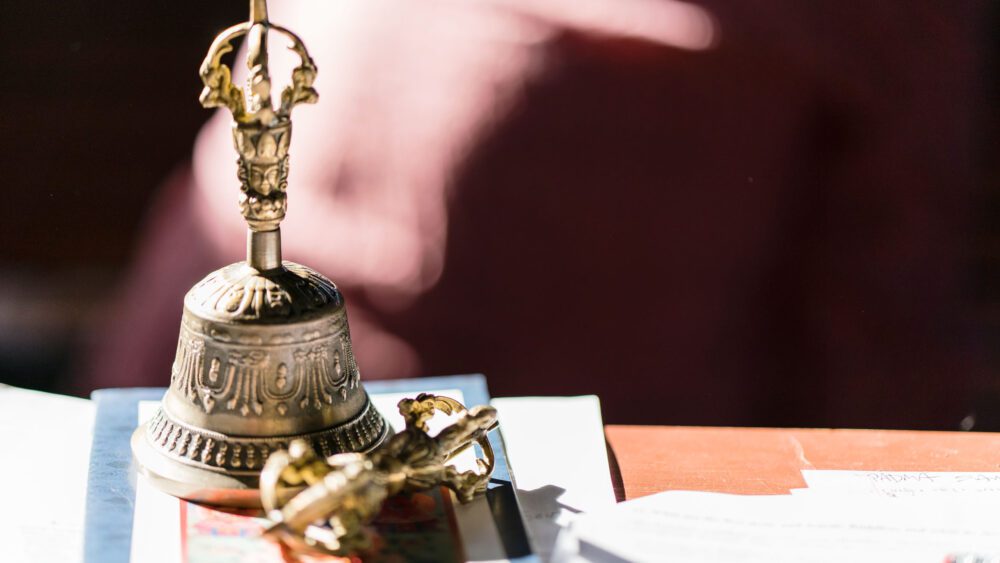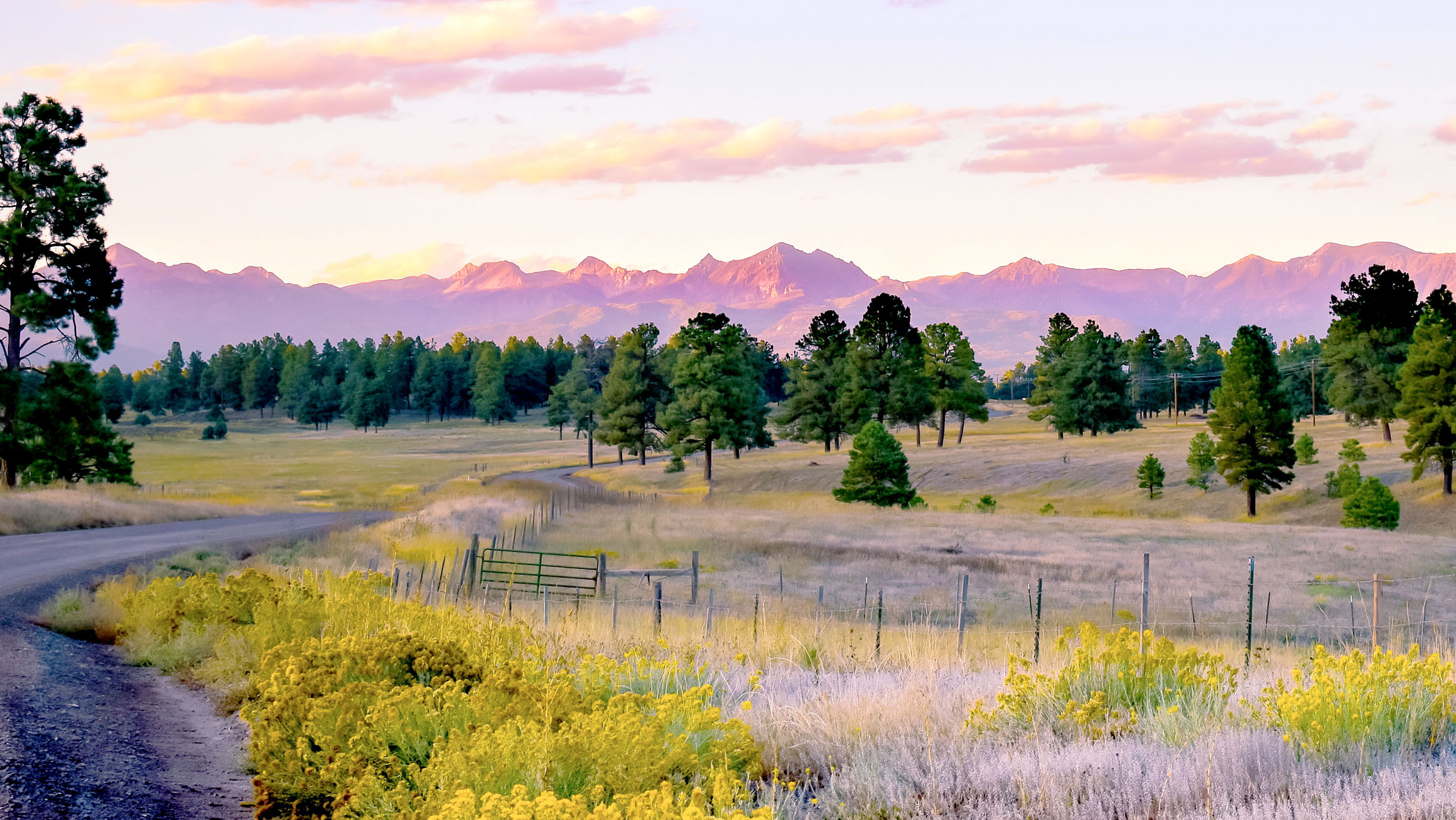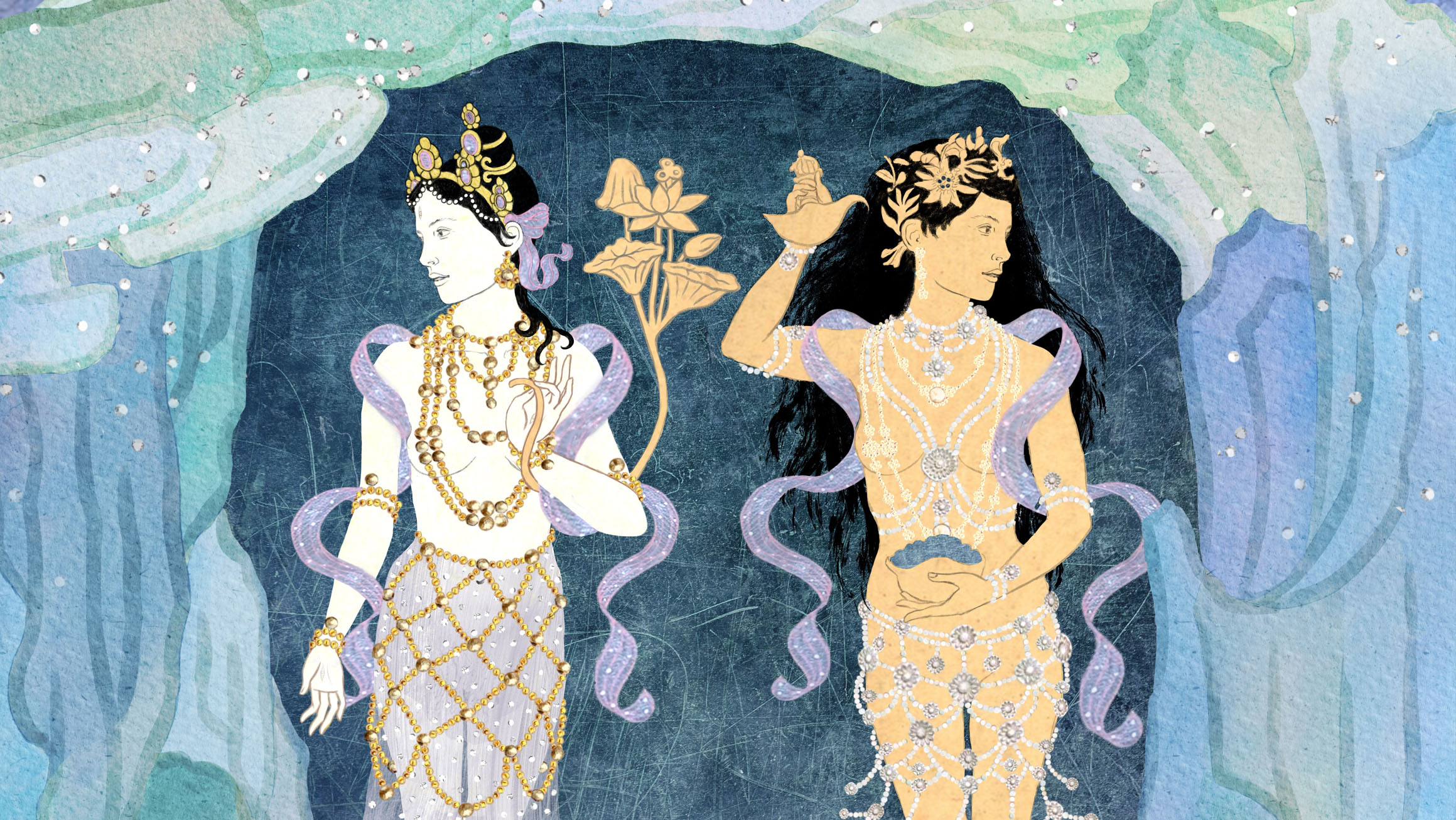In our latest blog contribution by fellow sangha member Denise Williams, she discusses her exploration of Tibetan Buddhist practices and symbols, particularly focusing on the significance of the Tibetan bell (dril-bu) and its symbolism as the primordial space of the feminine.
Lama Tsultrim Allione describes the Tibetan bell or dril-bu as, “…the symbol of the primordial space of the feminine, which is held in the left hand.”1 When I began practicing Feeding Your Demons with Lama-la in the fall of 2019, Tulku Orgyen P’huntsok Rinpoche of Pemaköd instructed me in the Words of My Perfect Teacher. Though I read then that the face on the bell is that of the Wisdom Mother of Space, Vajradhatvishvari,2 I didn’t yet have a bell,3 or consider her face as named until this year. For some Tibetans the face on the bell is Prajnaparamita.4 Lama Tsultrim knows the face as Dhatvishvari, and the bell itself as a symbol of Prajnaparamita.5
Lopön Karla Jackson-Brewer, leader of the Tara Mandala New York City Sangha, who opened the healing universe of sound and Chöd for me in 2020, taught me that, “The bell symbolizes emptiness, reminding us that the nature of all things, all phenomena, is empty of inherent existence.” Last month, over tea in Big Sur, Pamela Ambrose of the Tara Mandala San Francisco Bay Area Sangha reflected, “Simultaneously the bell clears the space, and fills the space.6
With every bell comes a dorje,7 the male symbol of compassion, which for some practitioners, as I discovered with Martha O’Hare of the Tara Mandala Florida Keys Sangha, must be picked up by the right hand, and only then, while the dorje is held, will they pick up the bell, also using their right hand, and then pass the bell into their left hand. The process is reversed for setting down the bell. Tara Mandala Chöpön Anna Raithel explained this movement helps a practitioner focus on skillful means.
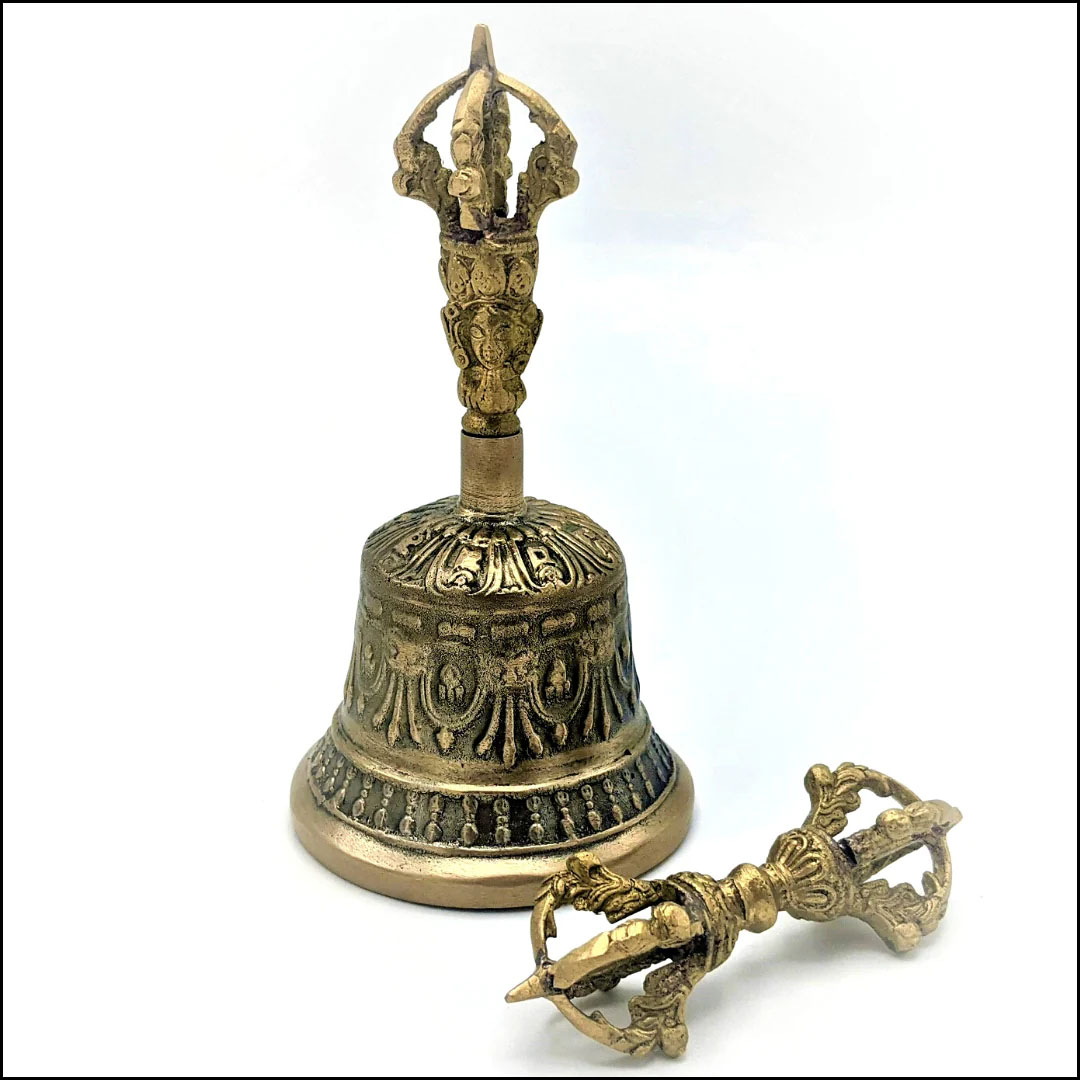
We respect and follow what we perceive of our teacher’s practice carefully and, over time, develop our own relationships with our instruments and practices, as we become one with our Lama. From my first retreat with Tara Mandala, I felt my feet move to the rhythm and timing of Karla’s voice. The point of my bell tilts a bit out from my heart, as Karla and Lama Tsultrim teach, so a steady sound comes out for each beat. Even as the vibrations continue though the universes and beyond, now like Dorje Gyaltsab Tulku Ösel Dorje, I put my index finger near the top of the bell, and embrace the back of Vajradhatvishvari with my middle, ring, and pinky fingers. Practicing with Anna’s mentorship, I have begun to explore a gentle movement out and back with the bell that reshapes the sounds. Thankfully, she also taught me how to replace my bell’s string with a paperclip before the inevitable break.
When practicing Green Tara with Tara Mandala San Diego Sangha’s leader, Chögé Sue Glumac, I learned the bell could move horizontally during parts of the practice, where, as Anna described, time is not being kept. With Sue’s Sangha up on a hill overlooking the Pacific Ocean, I saw for the first time the Tsen Red Man on a Red Horse come swooping down towards us, as Paul Motaung-Mndaweni of the Tara Mandala South African Sangha practiced with us across the ocean. Ever since, thanks to Paul and Sue and their Sanghas, I hear the thunderous hooves of the Tsen in my bell during the Zangri Tsen Mar Protector practice.
Last week on the land of Tara Mandala, the chestnut colt’s bright eyes greeted me. The next morning, when I got lost, I realized I could trust his family to mark a safe path to the top of Ekajati Peak, leading me and my bell away from the bear and the way which I would not walk alone.
Lama Tsultrim has a small travel bell, and also her large traditional sized bell that she has practiced with for over 50 years. I treasure the memory of seeing up close the smoothed face of the female Buddha on Lama-la’s bell. Lama Tsultrim was taught by her Tibetan teacher, like many before her and since, to cover the face of Dhatvishvari with her thumb, and over the years, as the features on the metal have smoothed away, the Buddha face of Lama Tsultrim has grown ever more radiant.
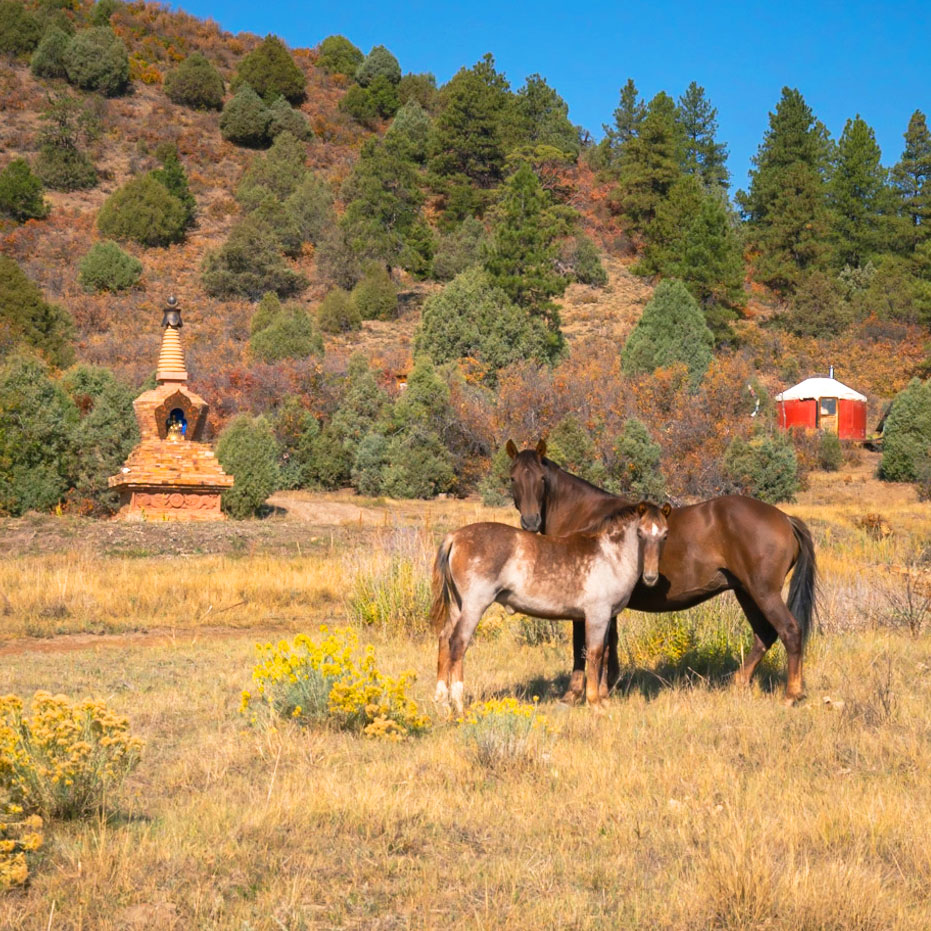
Lama Tsultrim is an emanation of Machig Labdrön, and Machig was secretly named Vajradhātvísvari by her Sönam Lama. He told her she was White Tara and the Great Mother Yum Chenmo, who gives birth to all the Buddhas and bodhisattvas.8 Other teachers do not ever cover the Buddha’s face, and Lama Tsultrim, in recent years, has changed to reflect this practice.
Like His Holiness the Dalai Lama, Lama Tsultrim considers herself always a student of Buddhism. She says, “It is so important that teachers keep learning and practicing.”9
Until this year, I didn’t realize what incredible, unique, advanced education opportunities Tibetans developed and enjoyed for well over a thousand years, and how these distinct Tibetan Buddhist journeys to enlightenment have woven so many beautiful traditions, dialects, and very effective practices for healing. For a woman from California, understanding the meaning of Tibetan Buddhist practices and symbols is the unfolding journey of a lifetime.
About Denise Williams
Denise Williams began meditating when she was 9, and soon fell in love with Tibet and the Dalai Lama. She received her PhD in Sociology at the University of California at Santa Barbara and has worked in mediation since 1984. She began studying with Lama Tsultrim and Tara Mandala in 2019. When she grows up she wants to become a writer. Also read the blog post Touching Our Mother Earth Each Day by Denise Williams

Photos: Header (J. Brownlee), horses (Bodhi Stroupe)
1 1 2000, “The Biography of Machig Lapdron (1055-1145),” In Women of Wisdom (p. 170). Snow Lion, which was first published in 1984 by Routledge & Kagan Paul.
2 p. 187.
3 In Sanskrit the bell is called ghanta. See Robert Beer, 2003, The Handbook of Tibetan Buddhist Symbols (p. 92). Shambhala Publications.
4 Beer, p. 94; Robert Beer, 1999, The Encyclopedia of Tibetan Symbols and Motifs (p. 244). See also plate 73 and 75 for different hand placements on the bell. Both of these books provide amazing details about the symbols on the bell, as does the former monk and XIV Dalai Lama Professor of Tibetan Buddhism and Cultural Studies at the University of California at Santa Barbara, José Cabezón’s forthcoming Vajrapāṇi, Guruparamparakramopadeśa, Bla ma brgyud pa’i rim pa’i man ngag, in the Rgyud ‘grel tsu section of the Dergé edition (D 3761, 164b-183a, Pedurma vol. 41, 446-497); and the Rgyud ‘grel nu section of the Nartang (N 3332, 185a-207b) and Peking (Q 4539, 184b-206b, especially about the dorje.
5 Interview July 16, 2023, The Alembic, Berkeley, California.
6 Interview August 3, 2023, Esalen, Big Sur, California.
7 Vajra in Sanskrit, see Beer, 2003, p. 87.
8 See especially, pp.146 and 151 of Jérôme Edou’s, 1996, Machig Labdrön and the Foundations of Chöd, from Snow Lion Publications, and for White Tārā, p. 79 of Sarah Harding’s 2013 edition of Machik’s Complete Explanation. Clarifying the Meaning of Chöd. Their translations are thoughtful and distinct and should both be read.
9 Sahaja: Spontaneous Wisdom, Spirit Rock, July 23, 2023.

